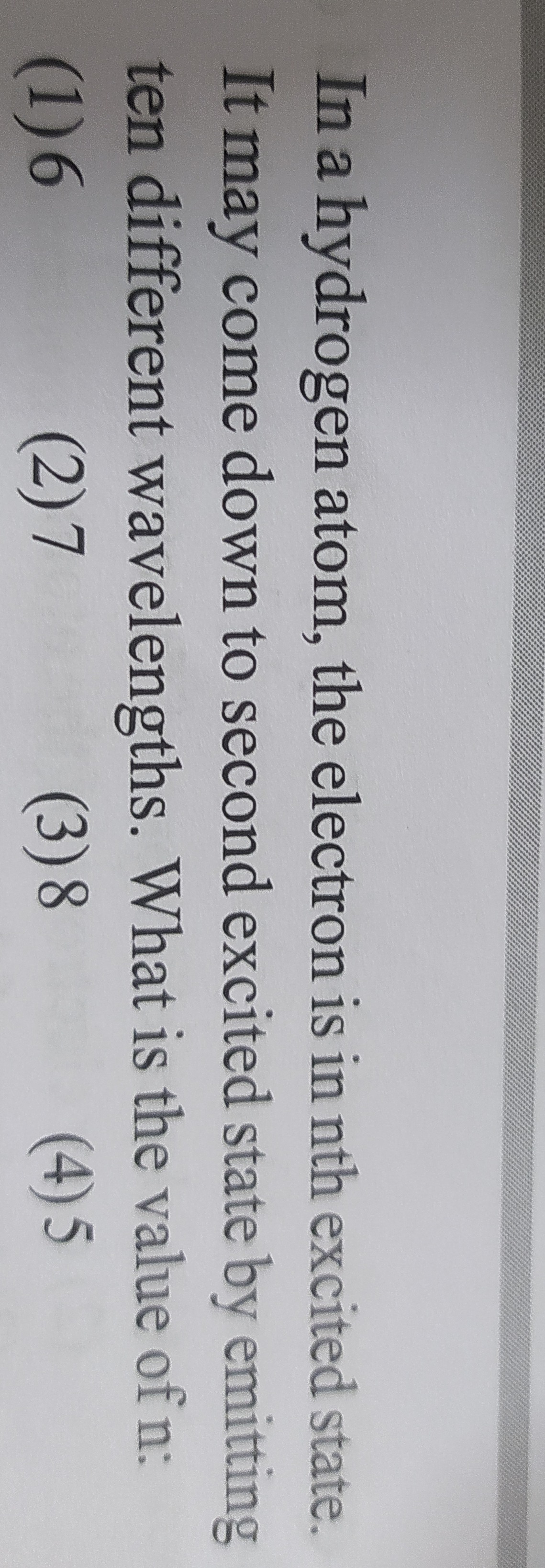Question
Question: In a hydrogen atom, the electron is in nth excited state. It may come down to second excited state b...
In a hydrogen atom, the electron is in nth excited state. It may come down to second excited state by emitting ten different wavelengths. What is the value of n:

A
6
B
7
C
8
D
5
Answer
6
Explanation
Solution
The electron is in the nth excited state, so its principal quantum number is Ni=n+1. It de-excites to the second excited state, which corresponds to the principal quantum number Nf=2+1=3. The number of distinct wavelengths emitted during transitions between Ni and Nf is given by 2(Ni−Nf)(Ni−Nf+1).
Substituting the values:
10=2((n+1)−3)((n+1)−3+1)
10=2(n−2)(n−1)
20=(n−1)(n−2)
Let x=n−2. Then x(x+1)=20.
x2+x−20=0
(x+5)(x−4)=0
Since x=n−2 must be positive (as n−1 and n−2 are consecutive positive integers), x=4.
n−2=4⟹n=6.
